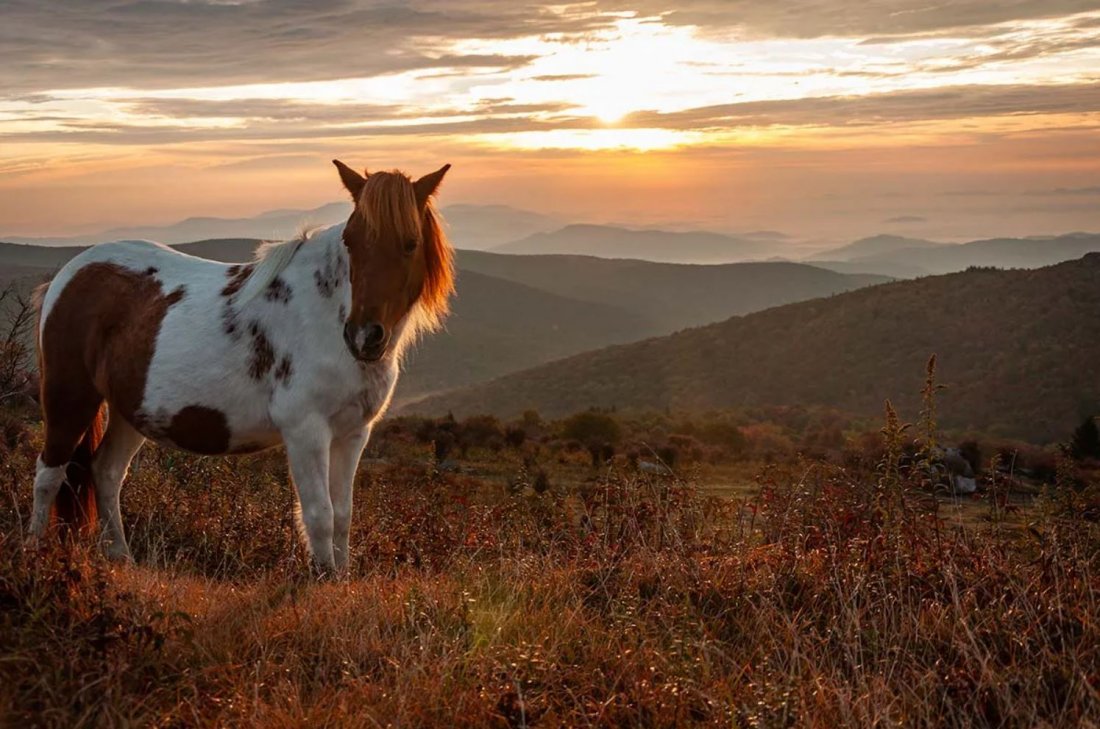
Want to See Wild Horses in the Eastern United States? These Places are the Best
Although the mustangs of the west are well known, it might surprise you to know that there’s quite a few wild horse herds on the eastern side of the United States as well… and you can see them in person relatively easily. If you’re planning to travel to these areas, it’s worth adding these spots to your itinerary.
Assateague Island National Seashore, Maryland and Virginia
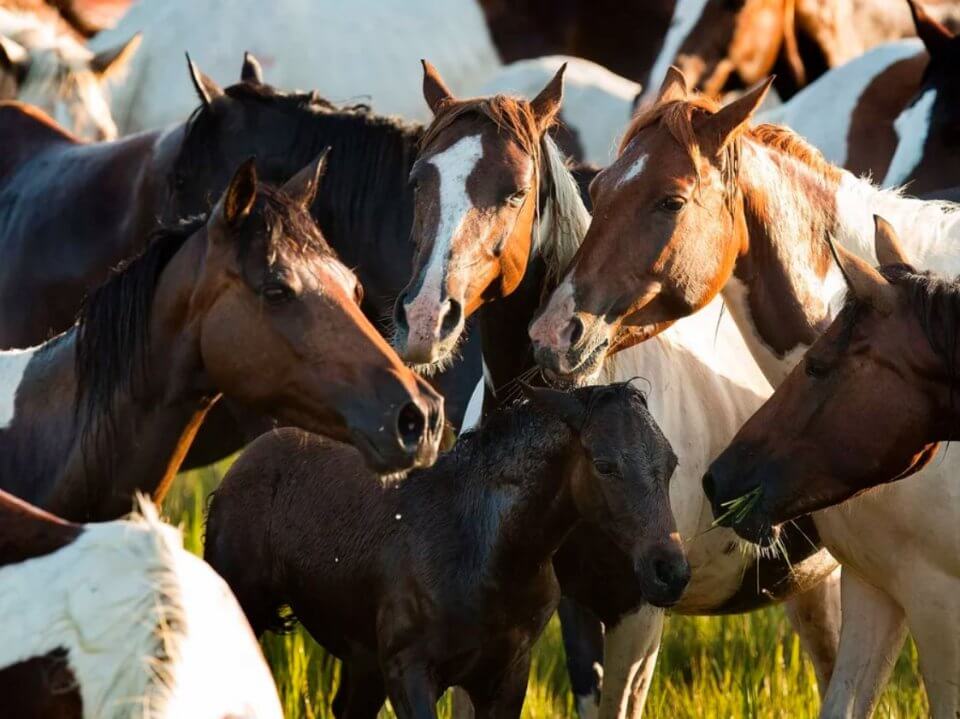
Nearly everyone has heard of the Chincoteague Ponies, thanks to the popular book, Misty of Chincoteague. The ponies live on the nearby island of Assateague, a barrier island that straddles Maryland and Virginia. Legends say that the ponies ashore from a Spanish shipwreck in the 17th century, but there’s no proof this happened. They were likely released from from early settlers in the 17th century.
The ponies wander freely through the beach, marshes and open meadows. Although visitors are cautioned against approaching, the ponies have no real fear of people and are frequently spotted in campsites.
The ponies are divided into two groups, the Maryland herd and the Virginia herd, both managed by their respective states, with different rules on visiting. The Maryland side is managed by the National Park Service, who allows you to bring your own horse and ride on the beach. The Virginia herd is managed by the Chincoteague Volunteer Fire Company, who obtains a special permit for use of Chincoteague National Wildlife Refuge for their ponies. The permit limits the herd size to 150 adult animals, which is why every July, the herd is rounded up for the Annual Pony Penning and auction.
For more information about visiting the Maryland side.
For more information about visiting the Virginia side.
See my travel guide to visiting Chincoteague.
Corolla, The Outer Banks, North Carolina
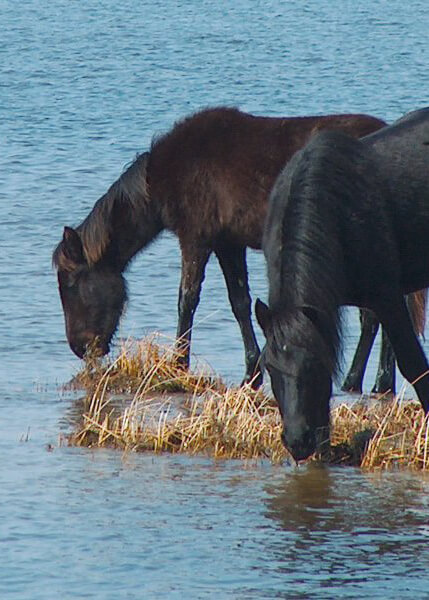
Another seaside pony destination is the pristine beaches and windswept dunes of Corolla, North Carolina. These horses are believed to be descendants of Spanish mustangs brought to the Outer Banks centuries ago, brought to land by early settlers, or settling here after shipwrecks. Off shore, there are ever changing sand bars which have caused many shipwrecks over the years, so it is plausible, but there’s no definitive proof of this.
The horses have adapted to the climate, but face challenges from habitat loss, human encroachment and natural disasters so the Corolla Wild Horse Fund was established in 1981 to protect the horses and their habitat.
The horses roam freely on the northern beaches of the Outer Banks, accessible by four wheel drive vehicles, although they occasionally wander right through town. The town is protective of their wild horses, and visitors are reminded to stay 50 feet away from the horses at all times.
Guided tours are available to see the horses.
Shackleford Banks, North Carolina
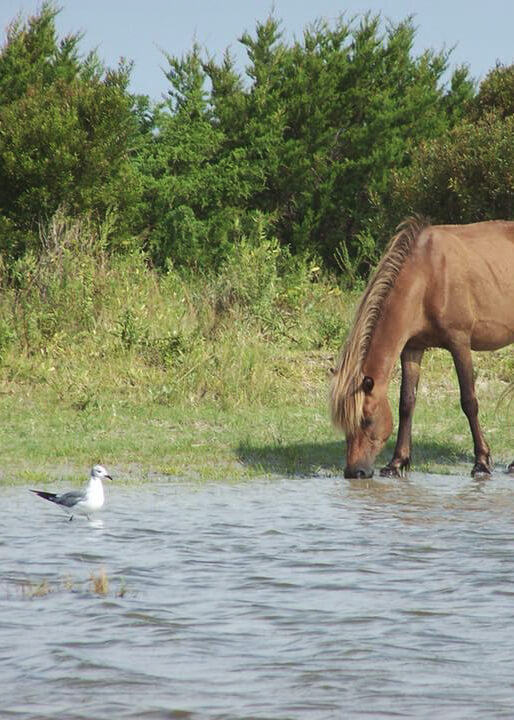
Shackleford Banks, located on a barrier island within Cape Lookout National Seashore, is home to a herd of wild horses. They’ve lived there for centuries, and it’s believed they were brought by early settlers and were either set loose, escaped, or swan to shore from shipwrecks, although it’s impossible to know exactly what happened. The horses have been DNA tested, and were found to be Colonial Spanish horses, originating in Spain and Portugal.
Despite being only between 11 and 13 hands high, they are considered horses. They, like other horses along the North Carolina shoreline, are now considered to be “Banker Horses,” or “Banker Ponies.”
Sometimes the horses are freeze branded to distinguish them, but not all the time. Records are kept on the horses, but otherwise, the horses are almost completely left to their own devices.
The easiest horses to see are on Rachel Carson Reserve, which is visible from the Beaufort waterfront. The horses are protected by law, and it is required to stay at least 50 feet from them at all times. They have very little human interaction, so they may bite, kick, or charge anyone they feel is a threat. Binoculars are recommended to see them and stay a safe distance away. The best way to see the horses at Shackleford Banks is by private boat or passenger ferry.
The Foundation for Shackleford Horses helps to maintain the herd, and more information about them can be found there.
Grayson Highlands State Park
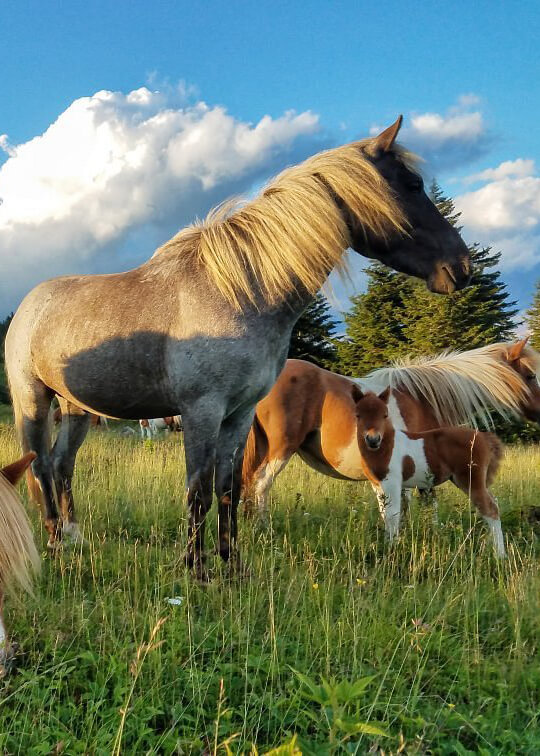
If mountain ponies are more to your liking, Grayson Highlands State Park might be ideal for you. In the Blue Ridge Mountains of Virginia, lives a herd of wild ponies, roaming freely through an already enchanting landscape.
The history of Grayson Highlands’ wild ponies dates back to the 1970s when a group of Assateague Island ponies was introduced to the park to help control the growth of vegetation. These ponies, descendants of the iconic Chincoteague ponies, quickly adapted to their new environment, thriving in the rugged terrain and becoming an integral part of the park’s ecosystem.
Visitors to Grayson Highlands State Park can encounter the wild ponies along several trails, including the Appalachian Trail, Rhododendron Trail, and Horse Trail North. In addition to hiking to see the ponies, there are several horseback riding trails and horse camping set ups.
Find out more about the park here.
Paynes Prairie Preserve State Park
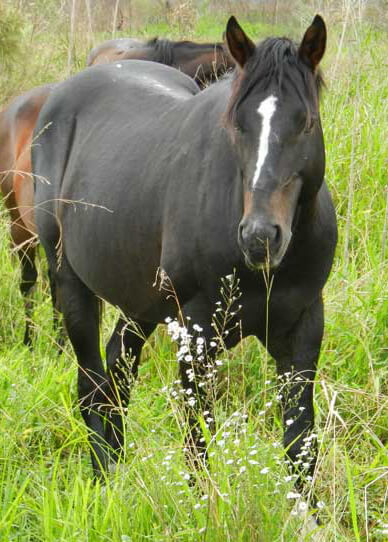
Paynes Prairie Preserve State Park, located in Florida’s Alachua County, is a haven for wildlife enthusiasts and nature lovers alike. Renowned for its vast prairies, marshes, and diverse ecosystems, the park is home to a herd of wild horses.
Like many of the other horses on this list, these horses are descendants of the horses of the Spanish colonial settlers.
This park is a huge reserve for all sorts of native animals. in 1975, 10 bison were re-introduced to the park, in an effort to restore Florida’s natural resources to pre-colonized conditions. Today there is a healthy population of bison for visitors to see (from a distance!)
Watch your step as your traverse the trails though, there are alligators lurking all around in the marshes, and often in the weeds next to the trail.
In addition to seeing the horses and other wildlife, you can bring your horse there for a trail ride. The Chacala Trail is a multi-use 6.5 mile trail winding through many distinct landscapes. Keep in mind though, that due to potential conflict with the alligators, snakes and bison, pets are not allowed on some of the trails.
Find out more about the park here.
The Free Roaming Horses of Kentucky
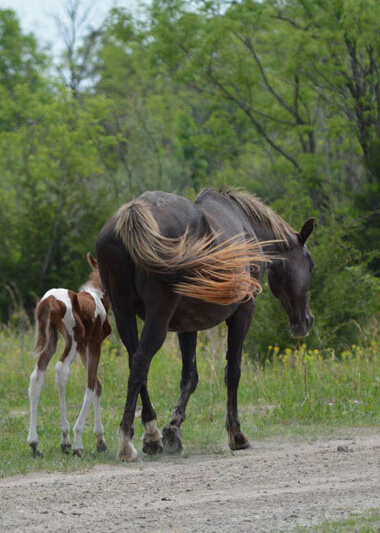
Technically, they aren’t wild horses. But much like man of the other herds on this list, they are horses that were set free by people in the area, it just happened much more recently.
It actually started with coal mining. Coal is a huge industry in eastern Kentucky. Due to regulations in the last 50 years, coal mines have been required to “reclaim” land that had been mined, which resulted in the creation of large parcels of flat land and rolling hills. Before, there was very little pasture land in this region, so locals begin using the areas for their horses and cattle. They were literally set free on the land during the spring, and reclaimed in the fall.
When economic troubles started in 2008, many more horses were released, including stallions. The population exploded. In 2014, volunteers begin documenting the horses, and so far have identified 500 horses over 9 countries.
They aren’t technically wild, as they know people, and some of them actually are owned by someone. Many organizations are working together to try to figure out what should be done about the growing herd, including the Appalachian Horse Project. The various groups do their best to monitor the herds, and will take pick up horses that are struggling to adopt them out to a new home.
But it seems for the most part, this herd is here to stay. Time will show us how this herd will continue to develop over time. The Appalachian Horse Project offers guided tours to see the horses, with a percentage of the cost going to support caring for the herds.
Conclusion
I am a big supporter of our national parks, and believe they are one of the best places to take a vacation. We are so lucky that some of these places also have viewing perks for horse lovers.
Although the mustangs of the western United States are cultural icons, it’s possible to still see wild horses without traveling far. Visit these eastern herds, see beautiful the diverse ecosystems the easy coast has to offer, and support their upkeep for generations to enjoy.

Ana
Dreaming of exploring the USA, and if I could spot wild horses in those stunning landscapes, it would be a dream come true! 🌄🐴
Joey
What about the Fort Polk horses in southwest Louisiana,really need a story on them,in order to keep government officials from destroying them. There’s a herd at fort Polk and another at Peason ridge wma
Courtney
JoeyI wasn’t aware of that situation at all… I’ll look into it.
Bobbi
Let’s fight to protect all the horses everywhere. They are the most beautiful large animal God made. I have 2. My first one actually came from a kill pin in Dakota when she was just 10 months old. I wish we could save them all. Mine are gentle & loving. They come for hugs & love to be groomed & rode. They have access to our back door & come knock for their peppermint & carrot treats. Can’t imagine life without horses & my dogs . Let’s do all we can to keep them wild & free like God made them. One day when Christ comes back to earth, He will be riding a beautiful white one. What a day that will be. If horses go to heaven I hope to see my Paint & Arabian, Shawnee & Sherry again .
William Lloyd
Yea take the easy route to view these feral nags and please dont venture West. We got enough of assholes disturbing our Western bands